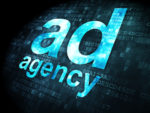 Marketers are under a lot of stress with increasing demands on their time, constant pressure to deliver results and the seemingly never-ending challenge to accomplish more with restrained budgets.
Marketers are under a lot of stress with increasing demands on their time, constant pressure to deliver results and the seemingly never-ending challenge to accomplish more with restrained budgets.
In this context, what marketing team wouldn’t be open to turnkey solutions provided by existing agency partners, including the ability to easily access specialized skills and secure additional resources for quick-turn projects – rather than onboarding a new agency partner?
Put yourself in this situation… your external agency roster is already too broad, budgets are locked, and expanding current agency scopes of work is a challenge. Even if a new agency/ vendor might be desired it is disruptive and time consuming to work through procurement, vet possible candidates, on-board a newly selected vendor, negotiate a new statement of work, and move forward. Sound familiar?
Therefore, out of necessity Marketers in this situation often turn to a current agency partner and seeking to shift dollars from one project to another or increase staffing in order to alleviating pressure. In the process, it wouldn’t be unusual if the agency suggested engaging the services of an in-house studio/ department or an affiliate agency. The suggestion may come with the enticing proposition of being able to self-fund incremental work through savings generated by the affiliate’s involvement, or via the affiliate’s mode of remuneration (e.g. principal based media buying). Best of all, the agency may offer to handle billing for the related party and will offer to treat related party billings as though they were coming from a third-party vendor (as pass-through costs).
Problem solved. Right? Be wary.
“What is right is often forgotten by what is convenient.” ~ Bodie Thoene
Having your agency partner(s) tap an in-house resource or affiliate on your behalf, knowingly or unknowingly, as easy as it may seem, comes with serious financial risk and control issues. What is the mode of remuneration? How much is the affiliate being compensated and by whom? What mix of staff is actually being deploying on your behalf? How many hours or value is being delivered for the fees? What level of transparency do you really have into “actual” versus “estimated” affiliate fees and expenses?
If you cannot readily provide answers to these questions, your organization runs the risk of overpaying for services, and or not understanding “what you are actually buying and receiving.”
As it is, few client/ agency agreements have adequate controls to govern the appointment and utilization by an agency of an in-house, affiliated, or holding-company-owned resource. The lack of contractual guidelines leaves marketers open to negative financial impact that can weigh heavily on working dollars and expectations.
Common risk areas associated with agency use of a related party include:
- Lack of a formal client notification/ approval requirement
- No competitive bidding requirement
- No rate sheet or billable hourly rate detail
- No time-of-staff reporting
- No job reconciliations
- Non-transparent pricing/ margins
- Application of unauthorized mark-ups
We certainly understand the desire by the agency community to engage their affiliates on client work and appreciate the potential benefits to the advertiser when it comes to tapping these diverse resources.
That said, experience suggests that the practice should be regulated and carefully monitored. Importantly, rules and requirements must be clearly documented in the client/ agency agreement when it comes to agency use of an in-house studio or any other related party or agency. Further, the affiliate must understand that they are subject to the same terms and conditions documented in the agreement.
Once full transparency is guaranteed, remuneration and billing rules are documented and understood, appropriate authorization practices are put in place, then tapping an agency partner’s extended resource network makes good sense.









